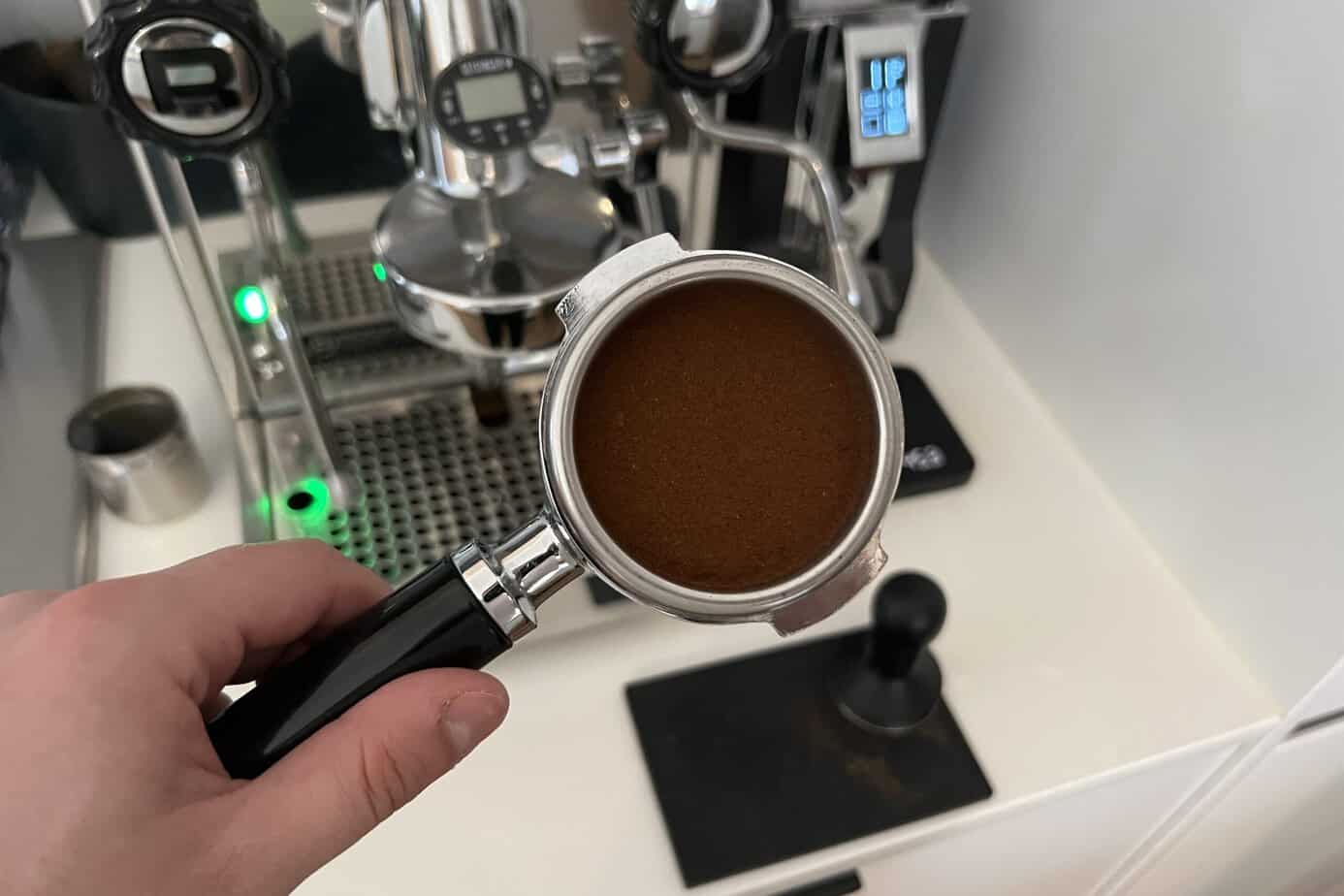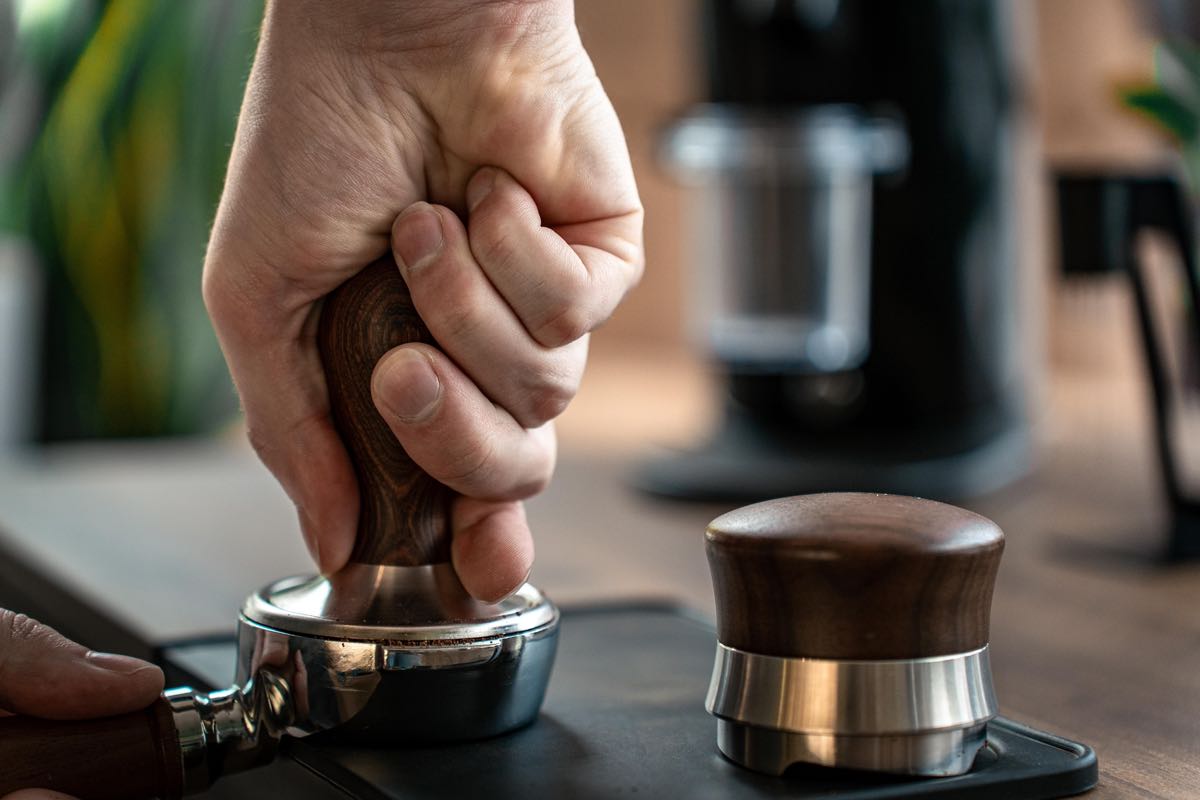Brewing espresso at home requires a mix of skill and precision, especially when it comes to tamping the coffee grounds. A common question for aspiring home baristas is: How much force should you use to tamp? Mastering this step can elevate your espresso by enhancing its flavor and consistency. Let’s dive into the details of effective tamping for a flawless espresso shot. Explore the features and performance of this machine in our Philips 5500 LatteGo review

Why Tamping is Crucial for Espresso
Tamping compresses the coffee grounds into a tightly packed, even surface, ensuring water flows uniformly through the grounds during extraction. This step is vital for a balanced espresso shot. Without proper tamping, air pockets may form, leading to uneven water flow and channeling. Channeling occurs when water finds a path of least resistance, resulting in weak, under-extracted coffee. Dive into the details of the Philips 5400 LatteGo review
Effective tamping guarantees even extraction, allowing the coffee's full flavor to shine. Skipping or improperly tamping can lead to sour or thin shots due to under-extraction. Compare these two models in our Philips LatteGo 5400 vs 4300 review
How Much Pressure is Ideal for Tamping?
While 30 pounds (13.6 kg) of pressure is a commonly cited benchmark, consistency is more important than achieving an exact number. The goal is to tamp until the coffee feels compact and stable. When the grounds are firmly compressed, you’ve likely applied sufficient pressure. Discover the differences between these machines in our Philips 3200 vs 4300 vs 5400 review
Avoid over-tamping, as it may lead to over-extraction and bitter flavors. Instead of fixating on a precise force, focus on creating a flat and even tamp for consistent water flow through the coffee bed. Learn how these two models compare in our Philips 3200 vs 4300 review
Practical Tips for a Perfect Tamp
Distribute Grounds Evenly
Begin by leveling the coffee grounds in the portafilter. Uneven grounds can result in inconsistent tamping and channeling. Use a distribution tool or gently tap the portafilter to smooth the surface before tamping. Uncover the key distinctions in our Philips 3200 vs 5400 review
Maintain Proper Tamper Positioning
Hold the tamper with a straight wrist and position your elbow at a 90-degree angle. This setup ensures even pressure and reduces strain. Grip the tamper handle firmly, using your thumb and index finger to guide it level.
Tamp with Even Pressure
Slowly press the tamper down until you feel resistance from the coffee grounds, a technique often called "tamping to resistance." Stop pressing once the grounds feel firm to avoid over-extraction.
Prioritize Consistency Over Force
Instead of aiming for a specific weight of pressure, ensure that you tamp uniformly each time. Consistent technique will yield consistent, high-quality shots.
Use a Stable Tamping Base
A sturdy base, such as a tamping mat, provides a stable surface, preventing the portafilter from moving and helping you achieve an even tamp.
Avoid These Common Tamping Mistakes
- Uneven Tamping: Applying pressure at an angle can result in an uneven extraction, creating both over-extracted and under-extracted zones.
- Inconsistent Pressure: Over-tamping can lead to bitterness, while under-tamping results in weak espresso.
- Skipping Ground Distribution: Failing to distribute grounds evenly before tamping can cause channeling, compromising your shot.
Tools to Improve Your Tamping
Several tools can help you refine your tamping technique. Coffee distribution tools and the Weiss Distribution Technique (WDT) tools assist in evenly spreading grounds, reducing clumps and channeling.
For beginners, advanced tampers with pressure sensors can be helpful. These devices guide users in applying consistent pressure, ensuring uniform tamping for every shot.

Conclusion: Focus on Consistency for Exceptional Espresso
Achieving the perfect espresso at home is more about consistent technique than chasing an exact tamping pressure. By prioritizing even tamping and proper ground distribution, you’ll produce high-quality shots every time. With practice and patience, you’ll develop the intuition to tamp like a pro, turning your kitchen into a mini espresso bar. So, keep experimenting and enjoy the rewarding process of perfecting your espresso craft!
